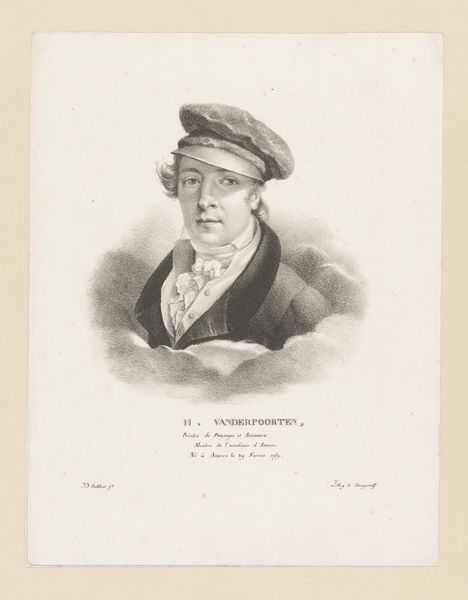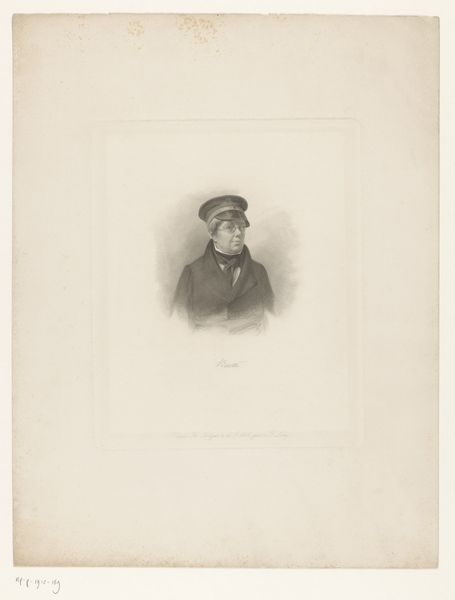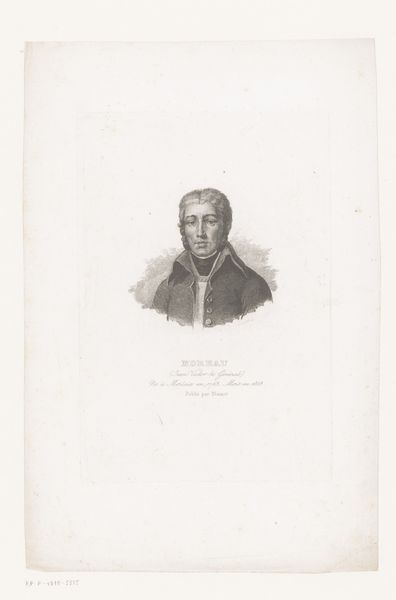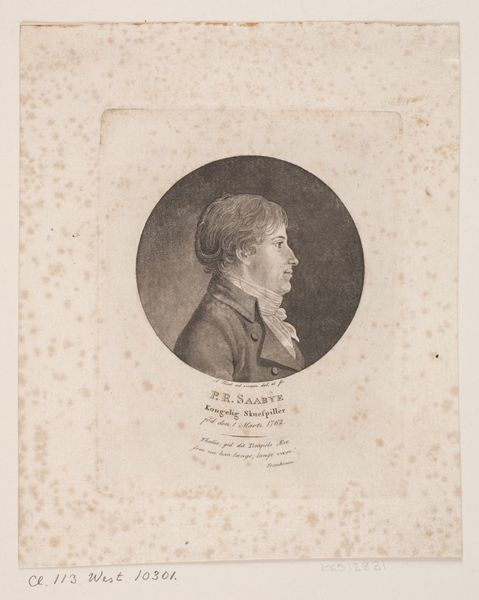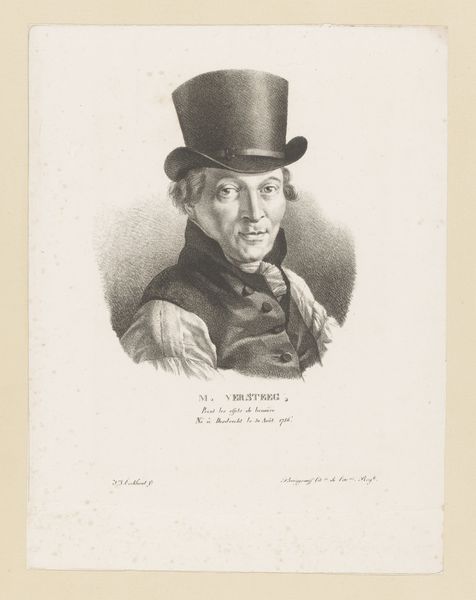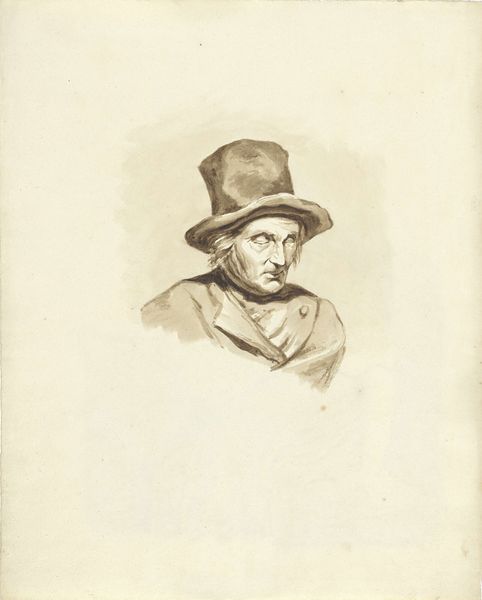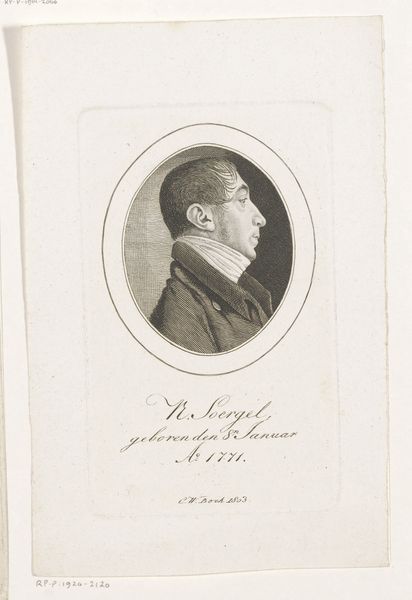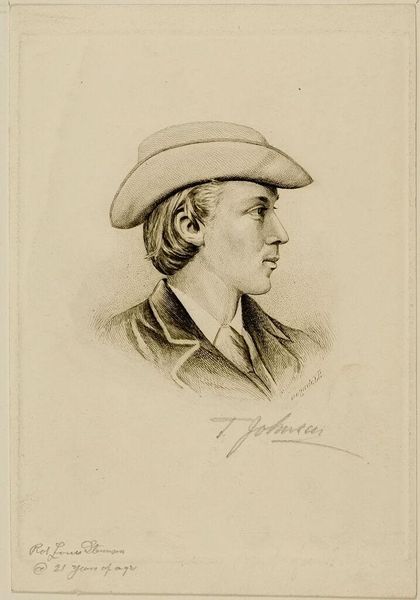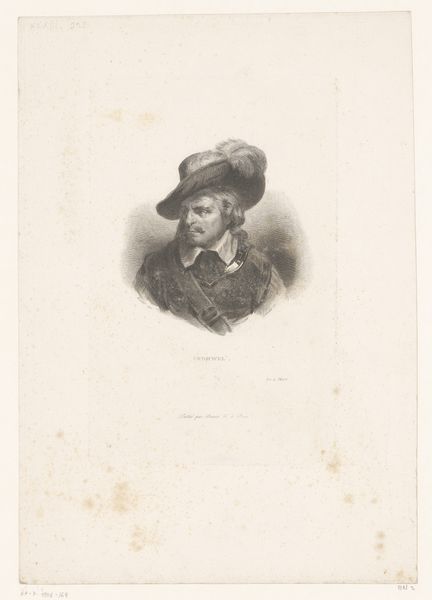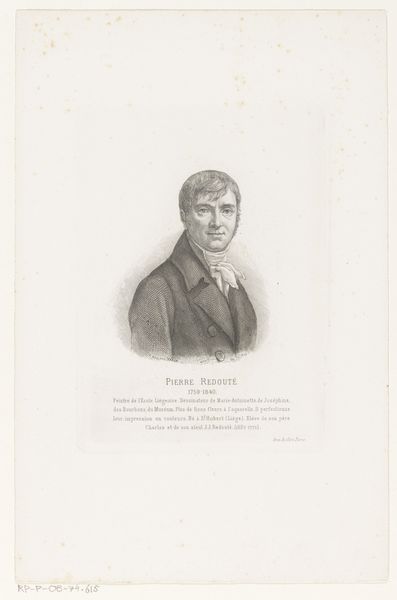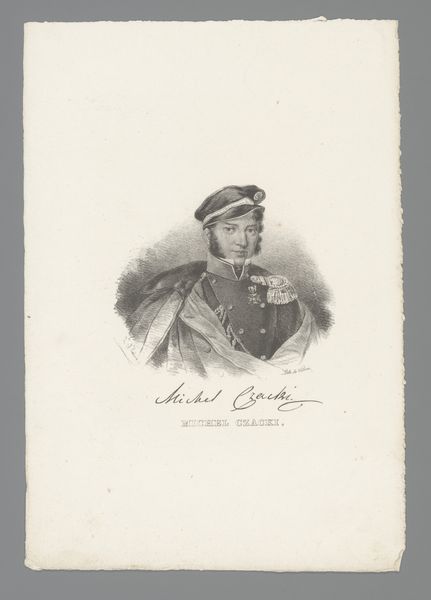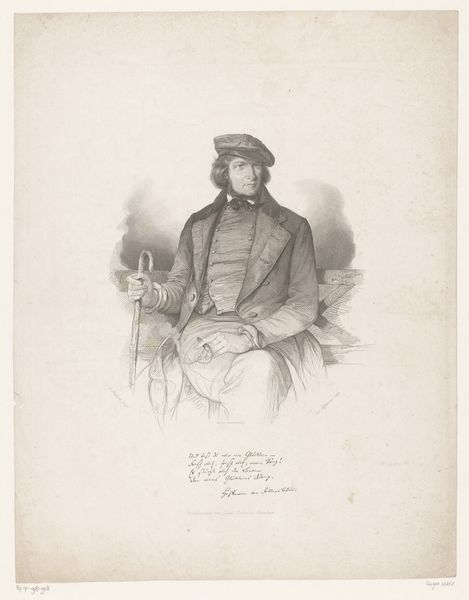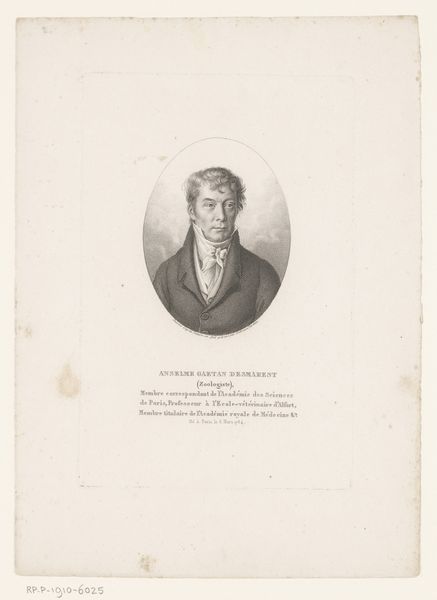
print, engraving
#
portrait
#
light pencil work
#
neoclassicism
# print
#
engraving
Dimensions: height 305 mm, width 239 mm
Copyright: Rijks Museum: Open Domain
Curator: Welcome. Here we have Guillaume Philidor Van den Burggraaff's "Portret van Johannes Christiaan Schotel," created in 1822. It’s currently held here at the Rijksmuseum. The portrait is an engraving, a meticulously worked print. Editor: My first impression is a certain melancholy. It's a somber portrait. There’s something about the set of his jaw and the placement of his cap that exudes a feeling of reserve. Curator: Indeed. Burggraaff's choice of engraving as a medium is particularly interesting, especially during the rise of lithography. Engraving required highly specialized skill and intensive labor. The work involved is time consuming: one tiny dot or line carved meticulously to create an image of immense detail. Consider also the dissemination of the image facilitated by this medium: easily multiplied and circulated widely. Editor: I see the marine elements in Schotel's clothing: he is sporting a maritime cap. This must be symbolic and telling about Schotel and the portrait overall. The visual weight of the image is firmly rooted in maritime iconography: Schotel's attire acts as a signifier, alluding not only to his profession as a marine painter but to a whole cluster of cultural associations attached to the sea: adventure, exploration, even danger. Curator: Precisely. Looking closer, notice how the precise lines create texture on Schotel’s coat, conveying the weight and feel of the material. The material reality is given considerable attention. Consider the social context. Portraits like these would circulate among the middle classes, affirming status and cultural capital, produced in multiple, reproducible and portable formats. Editor: The portrait also serves to immortalize Schotel; it projects his image into posterity. The gaze, directed slightly off to the side, has an introspective quality. I find myself wondering what occupied Schotel’s thoughts during the sitting, if this was a deliberate attempt to create an image that embodies creativity and a thoughtful personality. Curator: And through the very act of engraving, each impression becomes a transaction, commodifying Schotel’s likeness but also disseminating his identity through society, where each is both an art object, an expression of social position, and cultural status. Editor: The visual and the symbolic intertwined and embedded in this relatively small but potent portrait, an exercise in memory and legacy. Curator: Yes, and we can appreciate the material process that allowed it to permeate throughout that cultural landscape.
Comments
No comments
Be the first to comment and join the conversation on the ultimate creative platform.
